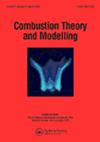Efficient numerical methods for the optimisation of large kinetic reaction mechanisms
IF 1.6
4区 工程技术
Q4 ENERGY & FUELS
引用次数: 1
Abstract
Optimisation of detailed combustion mechanisms means that the corresponding kinetic model is fitted to experimental data via optimising their important rate and thermodynamic parameters within their domain of uncertainty. Typically, several dozen parameters are fitted to several hundred to several thousand data points. Many numerical optimisation methods have been used, but the efficiency of these methods has not been compared systematically. In this work, parameters of an H2/O2/NO x mechanism (214 reaction steps of 35 species) were fitted to 1552 indirect (ignition delay times measured in shock tubes and concentrations measured in flow reactors) and 755 direct measurements. Three test cases were investigated: (1) fitting the Arrhenius parameters of 2 reaction steps to 732 data points; (2) fitting the Arrhenius parameters of 4 reaction steps to 1077 data points; (3) fitting the Arrhenius parameters of 10 reaction steps to 2307 data points. All 3 cases were investigated in 2 ways: fitting the A-parameters only and fitting all Arrhenius parameters (5, 11 and 29 parameters, respectively). A series of global (FOCTOPUS, genetic algorithm, simulated annealing, particle swarm optimisation, covariance matrix adaptation evolutionary strategy (CMA-ES)) and local (simplex, pattern search, interior-point, quasi-Newton, BOBYQA, NEWUOA) optimisation methods were tested on these cases, some of them in two variants. The methods were compared in terms of the final error function value and number of error function evaluations. The main conclusions are that the FOCTOPUS resulted in the lowest final error value in all cases, but this method required relatively many error function evaluations. As the task became more difficult, more and more methods failed. A variant of the BOBYQA method looked stable and efficient in all cases.大型动力学反应机制优化的有效数值方法
详细的燃烧机制的优化意味着相应的动力学模型拟合的实验数据,通过优化其重要的速率和热力学参数在其不确定域。通常,几十个参数被拟合到几百到几千个数据点。许多数值优化方法已被采用,但这些方法的效率尚未得到系统的比较。在这项工作中,H2/O2/NO x机理的参数(35种物质的214个反应步骤)拟合了1552个间接测量值(激波管中测量的点火延迟时间和流动反应器中测量的浓度)和755个直接测量值。研究了3个测试用例:(1)对2个反应步骤的Arrhenius参数进行了732个数据点的拟合;(2)对4个反应步骤的Arrhenius参数进行1077个数据点的拟合;(3)拟合10步反应的Arrhenius参数至2307个数据点。所有3例均采用两种方法进行研究:仅拟合a参数和拟合所有Arrhenius参数(分别为5、11和29个参数)。在这些情况下,对全局优化方法(FOCTOPUS、遗传算法、模拟退火、粒子群优化、协方差矩阵自适应进化策略(CMA-ES))和局部优化方法(单纯形、模式搜索、内点、拟牛顿、BOBYQA、NEWUOA)进行了测试,其中一些方法在两个变量下进行了测试。比较了两种方法的最终误差函数值和误差函数评价次数。主要结论是FOCTOPUS在所有情况下的最终误差值最低,但该方法需要相对较多的误差函数评价。随着任务变得越来越困难,越来越多的方法失败了。BOBYQA方法的一种变体在所有情况下看起来都是稳定有效的。
本文章由计算机程序翻译,如有差异,请以英文原文为准。
求助全文
约1分钟内获得全文
求助全文
来源期刊

Combustion Theory and Modelling
工程技术-工程:化工
CiteScore
3.00
自引率
7.70%
发文量
38
审稿时长
6 months
期刊介绍:
Combustion Theory and Modelling is a leading international journal devoted to the application of mathematical modelling, numerical simulation and experimental techniques to the study of combustion. Articles can cover a wide range of topics, such as: premixed laminar flames, laminar diffusion flames, turbulent combustion, fires, chemical kinetics, pollutant formation, microgravity, materials synthesis, chemical vapour deposition, catalysis, droplet and spray combustion, detonation dynamics, thermal explosions, ignition, energetic materials and propellants, burners and engine combustion. A diverse spectrum of mathematical methods may also be used, including large scale numerical simulation, hybrid computational schemes, front tracking, adaptive mesh refinement, optimized parallel computation, asymptotic methods and singular perturbation techniques, bifurcation theory, optimization methods, dynamical systems theory, cellular automata and discrete methods and probabilistic and statistical methods. Experimental studies that employ intrusive or nonintrusive diagnostics and are published in the Journal should be closely related to theoretical issues, by highlighting fundamental theoretical questions or by providing a sound basis for comparison with theory.
 求助内容:
求助内容: 应助结果提醒方式:
应助结果提醒方式:


